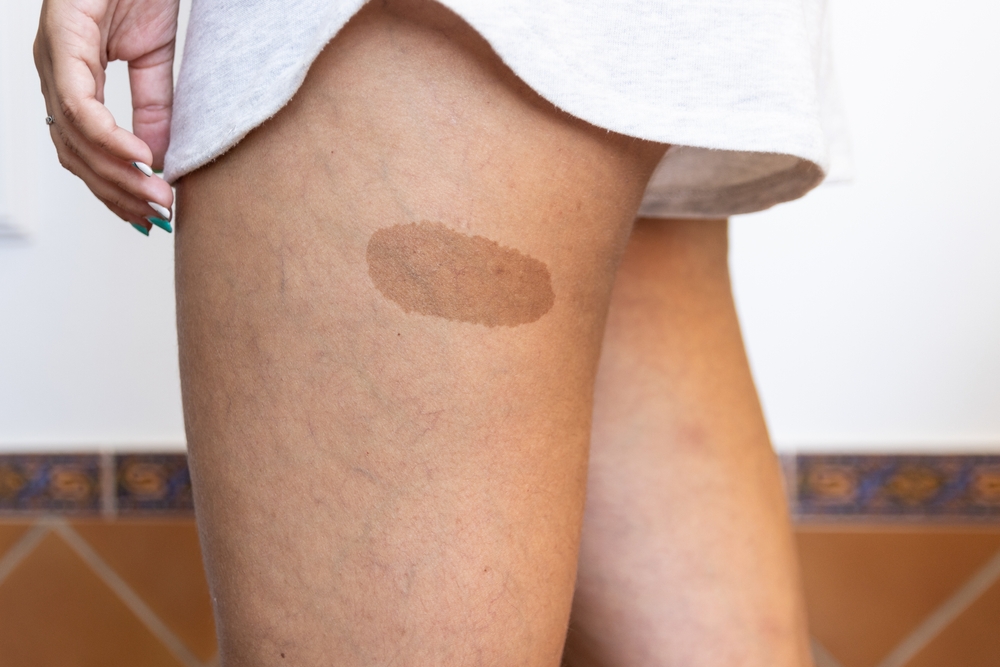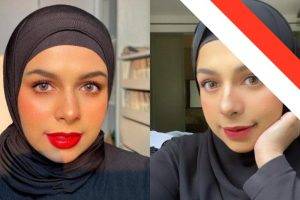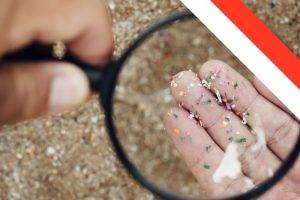Birthmarks, those intriguing and often enigmatic skin blemishes, have captured human curiosity for centuries.
These natural imprints on the skin’s canvas, which commonly appear during infancy, are more than just benign spots; rather, they serve as windows into the intricate workings of our bodies. Additionally, they offer fascinating insights into the mysteries of embryonic development and genetics.
Delving into the Origins of Birthmarks
These captivating skin features, that manifest either at birth or shortly thereafter, are the product of a complex and intriguing process. Moreover, numerous scientific journals have delved into the multifaceted factors that influence their formation, thus offering a deeper understanding of these enigmatic marks.
By peering into the depths of scientific research, we can gain a richer comprehension of the origins and types. Consequently, we can also dispel the myths that have surrounded them for generations. These imprints on our skin serve as a testament to the complexities of our biology, telling stories that unfold from the very beginning of our existence.
Types of Birthmarks
- Vascular Birthmarks: These are made up of blood vessels that haven’t formed correctly and are usually red. They include conditions like haemangiomas and port-wine stains.
- Pigmented Birthmarks: These arise from malformed pigment cells and include conditions like café au lait spots, Mongolian spots, and congenital nevi.
Genetic Factors
- For instance, researchers have linked variants in genes like TEK (TIE2), PIK3CA, GNAQ, GNA11, RASA1, and EPHB4 to various vascular malformations and overgrowth syndromes associated with vascular anomalies.
Developmental Factors
- Some manifest within the first weeks to months of life due to the maturation of neonatal skin and the deepening of skin colour over time5.
Pathophysiology
- The underlying molecular pathways involved in its formation include the PIK3/AKT/mTOR and RAS/MEK/ERK signalling pathways, which mediate cell growth and angiogenesis. The genetic variations in these pathways activate them, leading to the formation of vascular malformations.
Clinical Significance
- While most birthmarks pose no significant detriment to health, some vascular and pigmentary lesions can have associations with systemic complications or diseases.
Prevalence
- About one in 10 infants are born with a vascular birthmark each year, with some types being more common than others.
Diagnosis and Management
The diagnosis can be challenging due to the phenotypic heterogeneity and overlap among vascular birthmarks. The identification of genetic variants can be fundamental in the diagnosis and in devising novel therapeutic approaches.
A Closer Look at Types
Birthmarks come in various forms, each with its unique characteristics and underlying mechanisms.
Vascular birthmarks
Vascular birthmarks are common among neonates, with a prevalence rate of 20-30%. They predominantly arise due to blood vessels that haven’t formed correctly. They often show up as red markings on the skin. Here are some subtypes and relevant statistics:
- Salmon Patch and Nevus Simplex: These are examples of vascular birthmarks that sometimes exhibit spontaneous regression, meaning they fade away over time.
- Capillary Malformations: They occur in about 1% of the cases.
- Infantile Haemangiomas: Found in 4% of mature newborns.
The classification of vascular malformations is further based on their characteristics, such as their size, depth, and the type of vessels involved (capillary, lymphatic, venous, and arteriovenous malformations).
Pigmented Birthmarks
Pigmented birthmarks emerge due to an overgrowth or clustering of pigment-producing cells known as melanocytes. They show up in various forms, displaying different colours and shapes on the skin. Here are some common types:
- Moles: These can be skin-coloured, brown, or black, and may be flat or raised.
- Café-au-Lait Spots: These are often light brown.
- Mongolian Spots: Typically bluish or gray-blue.
The exact aetiology of pigmented birthmarks remains under scientific exploration, but the overgrowth of melanocytes is a central theme in their formation.
Both vascular and pigmented birthmarks range from being quite common to uncommon, with some representing essentially normal variants. The natural history varies from transient phenomena with no significance to permanent cutaneous findings, which, in some cases, may have associations with significant systemic complications or diseases.
Debunking Common Myths About Birthmarks
Modern scientific understanding has debunked these myths, providing a clearer picture of the factors influencing its development.
1. Birthmarks are Omens
Reality: In some cultures, they were believed to be omens or signs of future character traits. However, there’s no scientific basis for such beliefs. Birthmarks are natural skin formations and do not have any bearing on a person’s destiny or character.
2. Birthmarks are Contagious
Reality: Birthmarks are not contagious. They are inherent skin conditions and cannot be transmitted to others.
3. All Birthmarks Fade Away Over Time
Reality: While some types of vascular birthmarks like salmon patches may fade over time, others like moles or café-au-lait spots may remain unchanged or even become more pronounced with age2.
4. Birthmarks are Harmful
Reality: Most birthmarks are harmless and do not pose any health risks.
However, healthcare professionals should assess certain vascular or pigmented birthmarks, especially if they change in appearance or cause discomfort, as they could be associated with underlying systemic conditions.
5. Birthmarks Can Be Prevented
Reality: There’s no known way to prevent them. Their formation is largely influenced by genetic and developmental factors that are beyond control.
The Significance of Understanding Birthmarks
Delving into the complexities of birthmarks serves a dual purpose. Firstly, it demystifies these natural skin imprints, unravelling the intricate biological processes behind their formation. Secondly, it offers valuable insights for diagnosis and management, particularly in those rare instances where birthmarks may be indicative of underlying medical conditions. By shedding light, we gain a deeper appreciation for the wonders of human biology.
References
- Diociaiuti, A., Paolantonio, G., Zama, M., Alaggio, R., Carnevale, C., Conforti, A., Cesario, C., Dentici, M. L., Buonuomo, P. S., Rollo, M., & Hachem, M. E. (2021, October 7). Vascular Birthmarks as a Clue for Complex and Syndromic Vascular Anomalies. Frontiers in Pediatrics; Frontiers Media. https://doi.org/10.3389/fped.2021.730393
- Dohil, M., Baugh, W. P., & Eichenfield, L. F. (2000, August 1). VASCULAR AND PIGMENTED BIRTHMARKS. Pediatric Clinics of North America; Elsevier BV. https://doi.org/10.1016/s0031-3955(05)70240-6
- Brown, T. J., Friedman, J., & Levy, M. L. (1998, October 1). The Diagnosis and Treatment of Common Birthmarks. Clinics in Plastic Surgery; Elsevier BV. https://doi.org/10.1016/s0094-1298(20)32444-5
- Mahajan, P., Bergstrom, K., Phung, T. L., & Metry, D. (2022, July 1). The genetics of vascular birthmarks. Clinics in Dermatology; Elsevier BV. https://doi.org/10.1016/j.clindermatol.2022.02.006
- Benjamin, L. (2013, February 1). Birthmarks of medical significance in the neonate. Seminars in Perinatology; Elsevier BV. https://doi.org/10.1053/j.semperi.2012.11.007













